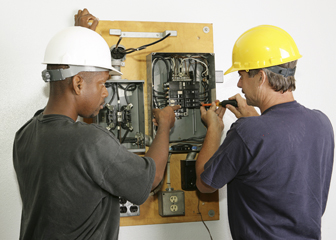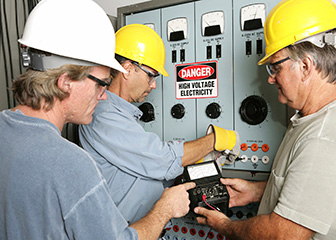Summary

| Quick Facts: Electricians | |
|---|---|
|
$48,250 per year
$23.20 per hour |
|
| High school diploma or equivalent | |
| None | |
| Apprenticeship | |
| 577,000 | |
| 23% (Faster than average) | |
| 133,700 | |
What Electricians Do
Electricians install and maintain electrical systems in homes, businesses, and factories.
Work Environment
Electricians work indoors and out, in nearly every type of facility. Almost all electricians work full time, which may include evenings and weekends. Although the work is not as dangerous as some other construction occupations, common risks include electrical shocks and burns, cuts, and falls.
How to Become an Electrician
Although most electricians learn through a formal apprenticeship, some start out by attending a technical school. Most states require licensure.
Pay
The median annual wage of electricians was $48,250 in May 2010.
Job Outlook
Employment of electricians is projected to grow 23 percent from 2010 to 2020, faster than the average for all occupations. Homes and businesses require more wiring than ever before, and electricians will be needed to install the necessary components.
Similar Occupations
Compare the job duties, education, job growth, and pay of electricians with similar occupations.
O*NET
O*NET provides comprehensive information on key characteristics of workers and occupations.
Contacts for More Information
Learn more about electricians by contacting these additional resources.












